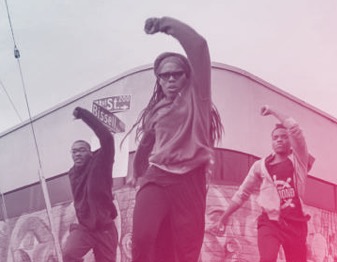The origin story goes something like this: Once upon a time there were two brothers in Southern California. They lived with their mother, their father, and their mother’s prodigious comic book collection. In the late ’70s, the brothers collided with the Los Angeles punk scene, and, swept up in punk’s do-it-yourself ethic, began making and selling their own comics.
Those comics, known as Love and Rockets, are perhaps the only fusion of punk, late-night monster movies, Archie Comics, and Mexican folktales in existence. They are certainly the only great one. In an era where most independent comics, however good, often had a sterile, misanthropic, shut-in quality, Love and Rockets were sprawling and lurid and hyper-oxygenated. One got the feeling that the Hernandez brothers actually left the house occasionally.
Both of them wrote complex stories that featured dozens of characters — Jaime’s set in a mythical town in Ventura County called Hoppers, and Gilbert’s in an equally imaginary town in Central America called Palomar. Characters squabbled, fell in love, crossed the border, had gay sex without necessarily thinking of themselves as gay, danced around in combat boots, had children and then proved to be kind of bad parents, and generally behaved the way that real people do, but in convenient, portable, two-dimensional, black and white form.
New Stories: Vol.1 is the most recent collection of Love and Rockets comics, and it’s most interesting to read it with this question in mind: “What is it like to write about the same characters for twenty-eight years?” Jaime seems to be fine with it. His stories in the collection are deft and funny and class-conscious and not unlike the stories that he wrote in his twenties. They hit their familiar marks like a practiced vaudeville act, and the entire experience is not unlike that of slipping into a tub of warm bathwater.
Then there’s the matter of Gilbert, who is deep into a new authorial persona that is 1/3 R. Crumb in his acid days, 1/3 Chris Ware in his “all human life is a miserable failure at something” mode, and 1/3 the guy who used to be Gilbert Hernandez, before he moved to Bummertown and set up residence in a lean-to shanty made entirely out of LSD blotter paper. Reading his sections of New Stories is like settling in to watch a new episode of one of your favorite television shows, only to discover that the title sequence is gone, all of your favorite characters are gone, and actually, the show now consists of nothing but oboe noises and colored dots moving slowly across the screen. Or, to use a specific example from the book, by a cartoon squirrel looking for the enormous penis who gave him a coin to play the slot machines. Or by a character with colander-like holes in his forehead experiencing Old Testament-level suffering (worms, bleeding from eyes, mudslides, eccentric hospitality) as he attempts to get home to a wife who may or may not have poisoned his bean tacos.


